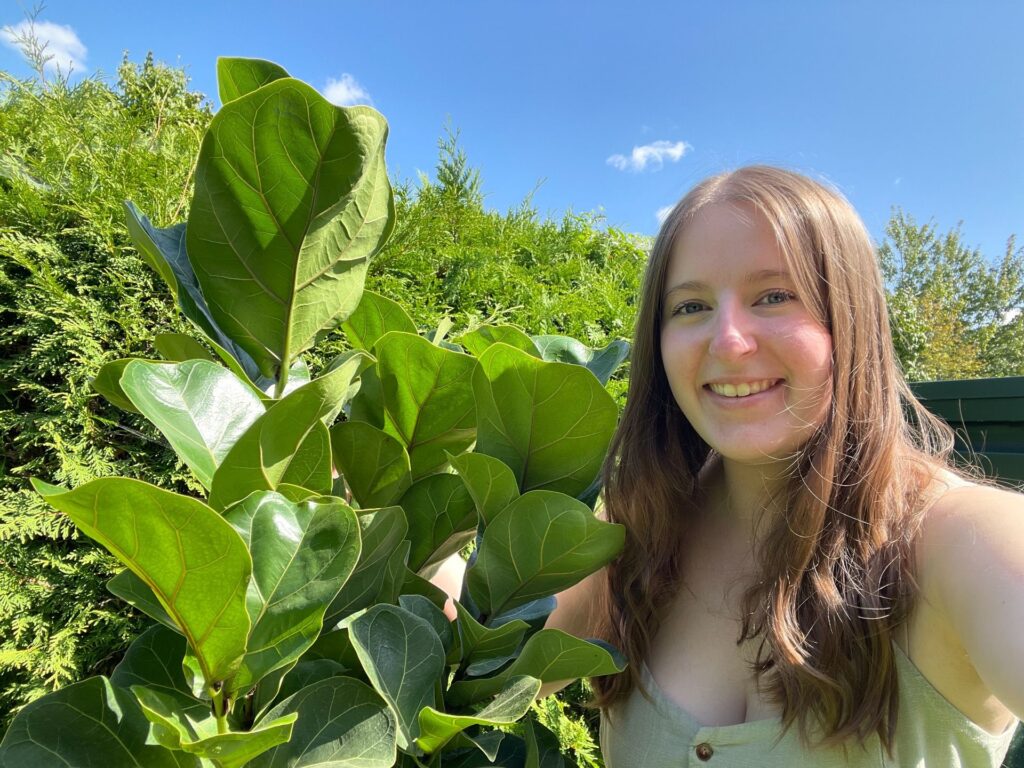
What am I missing about Fiddle Leaf Fig care?
When I first brought my fiddle leaf fig (Ficus lyrata) home from House of Plants, I was IN LOVE. The variety I chose had leaves that were slightly smaller than the typical fiddle leaf fig, which, as I was told, made it better suited for indoor living. The folks at House of Plants reassured me that this particular variety was designed to acclimate more easily to the indoor environment. This was great news, considering I was worried about how finicky this plant’s reputation can be. This reputation is SO important, because it can scare you away from this beautiful plant. But with the right fiddle leaf fig care plan, you will be set!
I’ll admit, though, the fiddle leaf fig can still be a bit temperamental. This plant is known for being dramatic when its needs aren’t met—whether it’s pouting over too little light or showing signs of stress if its watering schedule is off. That said, the payoff of seeing it thrive is worth every bit of effort. When a fiddle leaf fig is happy, there’s nothing quite like the beauty of those massive, glossy leaves.
In this guide, I’m going to take you through everything you need to know about fiddle leaf fig care—from light and watering needs to common problems and solutions. I’ll share tips based on my own experience so you can avoid some of the beginner mistakes I made and give your fiddle leaf fig the best possible start in your home.
The Basics of Fiddle Leaf Fig Care
Fiddle leaf figs are sunlight-loving plants, but let me tell you, they’re pretty picky about it. When it comes to light, these plants thrive in bright, indirect light. Place your fiddle leaf fig near a sunny window, but make sure it doesn’t get hit with direct sunlight all day long. Too much direct light can scorch the leaves! Trust me, there’s nothing more disheartening than seeing brown spots develop because the plant got a little too much sun. On the flip side, if your fiddle leaf fig doesn’t get enough light, you might notice it becoming a bit moody. It may start dropping leaves or growing leggy as it stretches toward any available light source.
Watering can be tricky with fiddle leaf fig care, but I’ve found a schedule that works well, especially in Canada’s climate. During late summer and early fall, I water mine every two weeks. As we move deeper into fall and the temperatures cool down, I’ll adjust to water less frequently since the soil doesn’t dry out as quickly. The key is to let the top couple of inches of soil dry out between waterings. Overwatering is a common issue with these plants, so be careful not to let the roots sit in water.
Temperature and humidity also play important roles in keeping your fiddle leaf fig happy. Ideally, you want to keep your indoor temperatures between 60-75°F (15-24°C). These plants prefer warm, humid environments, so if your home tends to be on the dry side, especially during the colder months, consider running a humidifier nearby. This helps keep those big, beautiful leaves from drying out or developing crispy edges.
Fiddle leaf fig care can seem intimidating at first, but as long as you pay attention to light, water, temperature, and humidity, your plant will have a great foundation for thriving.
Soil & Potting Tips
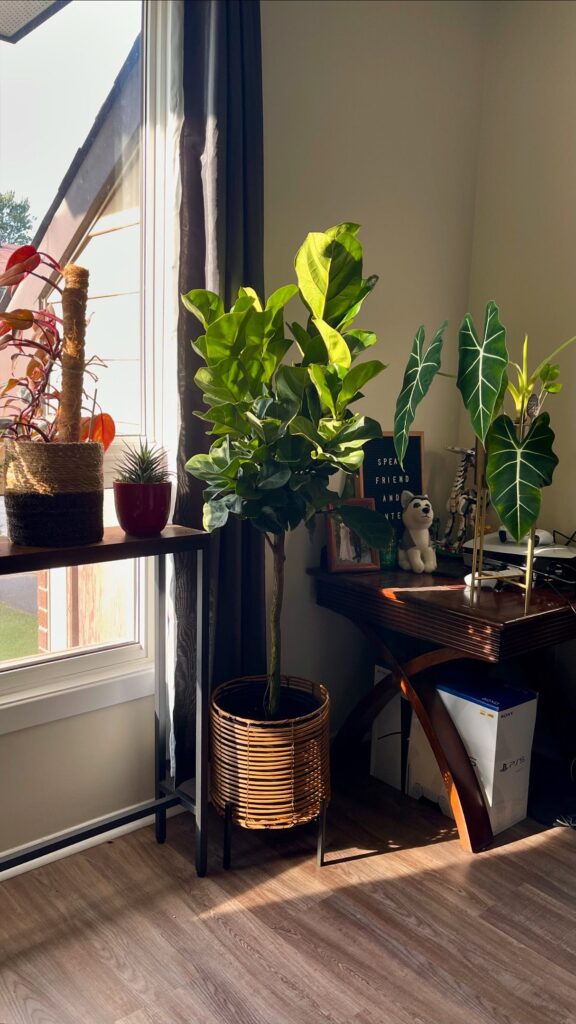
Getting the soil and potting right is key for a happy fiddle leaf fig. I learned early on in gardening that not all soil mixes are created equal, and using the wrong type can lead to serious problems. Fiddle leaf figs prefer well-draining soil, and I can’t stress enough how important this is. A good mix will help prevent overwatering, which is one of the most common issues with fiddle leaf fig care.
Look for a potting mix designed for indoor plants. You can create your own by mixing potting soil with perlite or orchid bark to improve drainage. When I grabbed mine from House of Plants, they let me know that it had been recently repotted. So it would be good till the next spring!
When it comes to choosing a pot, make sure it has drainage holes at the bottom. This allows excess water to escape and helps prevent root rot, which can quickly damage or kill your plant. I keep mine in a nursery pot, on a plate, inside a decorative pot raised slightly off the ground!
You won’t need to repot your fiddle leaf fig too often, but when the time comes, it’s important to do it right. Typically, repotting is necessary every 1-2 years as the plant outgrows its current pot. You may notice roots poking out of the drainage or it isn’t absorbing water as well as it used to. These can be signs it might be time for a new pot. Choose one that’s just a couple of inches larger than the current one to avoid overwhelming the roots. Repotting in the spring is ideal, as this is when the plant is entering its active growing season.
Pruning & Shaping
Pruning a fiddle leaf fig might seem intimidating at first, but trust me—it’s easier than you think. It can make a big difference in how your plant looks and grows. I plan to prune my fiddle leaf fig to encourage new growth and keep it looking full come springtime. The first step is to trim off any damaged or unhealthy leaves. Brown or yellowing leaves aren’t doing your plant any favours, and removing them will allow it to focus energy on producing new, healthy growth.
Shaping your fiddle leaf fig is another important aspect of care, especially if you want to maintain a specific structure. Whether you prefer a tall, tree-like shape or a bushier look, pruning is your best tool. If you’re going for the tree shape, prune the lower leaves to expose the stem and encourage upward growth. If you want your plant to stay bushy, focus on trimming the top to encourage side branches to develop.
Don’t be afraid to give your fiddle leaf fig a little haircut! It might feel like a big step, but pruning can actually help your plant grow stronger. Just make sure to use sharp, clean scissors or pruning shears, and always cut at an angle just above a node (where a leaf is attached to the stem).
Common Problems & How to Fix Them
Fiddle leaf figs are gorgeous, but they’re also a bit dramatic when something’s not quite right. Fortunately, most problems with fiddle leaf fig care are easy to fix once you know what to look for.
One of the most common issues is yellowing leaves, which is usually a sign of overwatering or poor drainage. If your plant’s leaves are turning yellow, check the soil. Is it soggy? If so, let it dry out before you water again, and consider adjusting your watering schedule. Make sure your pot has proper drainage, too—sitting in water is a sure way to stress out your plant.
Another issue is leaf drop, which can happen for several reasons, including stress, drafts, or underwatering. If you’ve recently moved your plant or changed its environment, it might be reacting to the change. Drafts from windows or air vents can also cause your fiddle leaf fig to shed leaves. So make sure it’s in a stable location to avoid this. Finally, underwatering can cause the leaves to drop as well, so check the soil and adjust your watering routine if needed.
What else could go wrong?
Brown spots on the leaves can be alarming, they’re often a sign of either fungal infections, root rot, or sunburn. If the brown spots are soft and mushy, it’s likely due to overwatering, leading to root rot. Let the soil dry out, and be careful not to water too frequently. If the spots are dry and crispy, your plant might be getting too much direct sunlight, so move it to a spot with more indirect light.
Lastly, let’s talk about pests. Fiddle leaf figs can occasionally fall victim to pests like spider mites, scale, or aphids. If you notice small webs, sticky residue, or tiny bugs on your plant, it’s time to take action. I like to use a gentle insecticidal soap or neem oil to get rid of pests, and it’s important to check the plant regularly to catch any infestations early.
Fertilizing & Feeding: Keys to Fiddle Leaf Fig Care
Feeding your fiddle leaf fig is another important part of keeping it healthy and vibrant. These plants are known for their big leaves! To keep them looking their best, you’ll need to provide them with the right nutrients. During the growing season, your fiddle leaf fig will benefit from a regular feeding schedule.
I like to use a balanced, easy spray fertilizer every couple weeks during the growing season. Right now I’m using Plant RX fertilizer – which I love cause it is so easy. Look for one that has equal parts nitrogen, phosphorus, and potassium, which will help promote strong root growth and keep those leaves nice and green. If you’re new to fertilizing, don’t worry! Follow the instructions on the fertilizer package, and make sure to dilute it properly before applying it to the soil.
During the fall and winter months, you can ease up on the feeding. Fiddle leaf figs go through a dormant period during the colder months, so they don’t need as much fertilizer. Over-fertilizing during this time can actually do more harm than good, so it’s best to skip the feedings until spring rolls around again.
Your fiddle leaf fig is a hungry plant, but with the right feeding routine, you’ll keep it happy and healthy all year long!
Seasonal Care Tips
Fiddle leaf figs have different care needs depending on the season, so adjusting your routine throughout the year is key to keeping your plant happy. In the warmer months, you’ll find that your fiddle leaf fig is more active, and in the colder months, it slows down, entering a more dormant phase.
Spring and Summer:
During spring and summer, your fiddle leaf fig is in its growing season, meaning it will need more frequent watering. I usually check mine every 7-10 days, but the frequency depends on how quickly the top couple of inches of soil dry out. Warmer temperatures also mean the plant might appreciate a little misting to increase humidity. While it’s not mandatory, misting can help create a more tropical environment—similar to the plant’s natural habitat. If you prefer, you can also use a humidifier to keep the air around your plant moist.
Fall and Winter:
In the fall, I gradually cut back on watering as my fiddle leaf fig begins to slow down its growth. This slowing is caused by your plant receiving less light due to seasonal changes, considering this for all your plants is important. By winter, I will probably only water it once every 3-4 weeks. This plant doesn’t need nearly as much water during dormancy, so overwatering is a bigger risk.
However, even though it needs less water, don’t forget about humidity! During winter, indoor heating can dry out the air, which isn’t ideal for those broad leaves. You can run a small humidifier near my plant during the colder months to prevent the leaves from developing crispy edges. Another tip: keep your fiddle leaf fig away from cold drafts or heating vents, as sudden temperature changes can stress the plant and cause it to drop leaves.
Each season brings its own set of care adjustments, but with a little attention, your fiddle leaf fig will thrive year-round.
Fiddle Leaf Fig FAQs
Still wondering why your fiddle leaf fig isn’t thriving? Here are some quick answers to the most common questions I get:
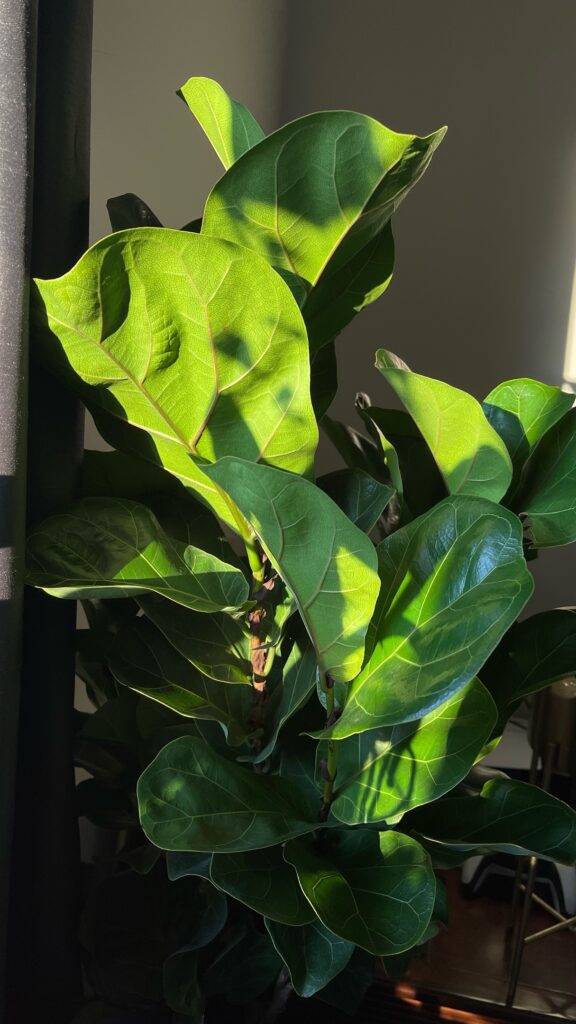
Why are the leaves turning brown?
Brown spots can be caused by too much direct sunlight, overwatering, or low humidity. Check your plant’s light exposure and make sure the top 2 inches of soil dry out between waterings. Increasing humidity may also help.
Why is my fiddle leaf fig dropping leaves?
Leaf drop can happen due to stress, such as moving the plant, drafts, or inconsistent watering. Make sure your plant is in a stable spot with bright, indirect light and stick to a regular watering schedule. Having a fiddle leaf fig care plan is important here, if you don’t stick to the plan and move your plant all the time, it can get worse!
How can I tell if my fiddle leaf fig is getting enough light?
If your fiddle leaf fig is growing tall and leggy with small, sparse leaves, it may not be getting enough light. Move it closer to a bright window, but avoid direct sun.
Now You Know How to Keep your Fiddle Leaf Fig Care Easy!
At the end of the day, caring for a fiddle leaf fig is all about patience and love. Yes, they can be a bit dramatic, and sometimes it feels like they’re making demands just to keep you on your toes, but trust me—it’s worth it when you see those glossy, vibrant leaves reaching for the sky.
If you take the time to learn your plant’s needs and adjust your care routine throughout the year, you’ll find that growing a fiddle leaf fig isn’t as daunting as it seems. Whether it’s cutting back on watering during the winter or making sure your plant has enough humidity, each small effort goes a long way in keeping your fiddle leaf fig happy. This is the first big plant I’ve purchased, so establishing easy fiddle leaf fig care that works was my top priority.
So don’t be discouraged if you hit a few bumps along the way—this plant may test your patience, but watching it grow and thrive is one of the most rewarding experiences as a plant parent. Embrace the challenge and enjoy the journey!
Discover more from Savage Gardener
Subscribe to get the latest posts sent to your email.


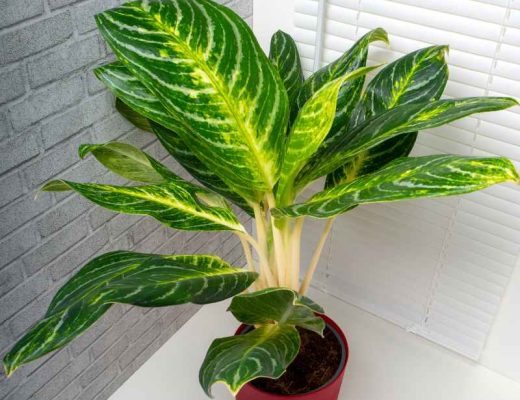
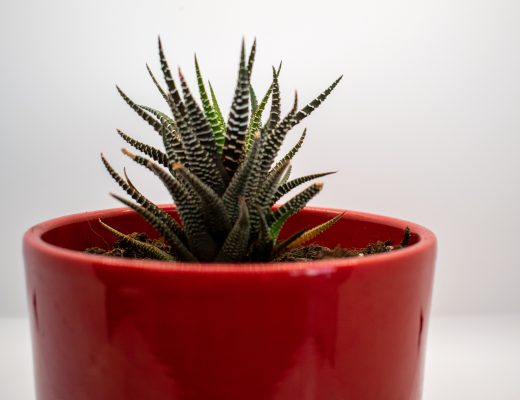
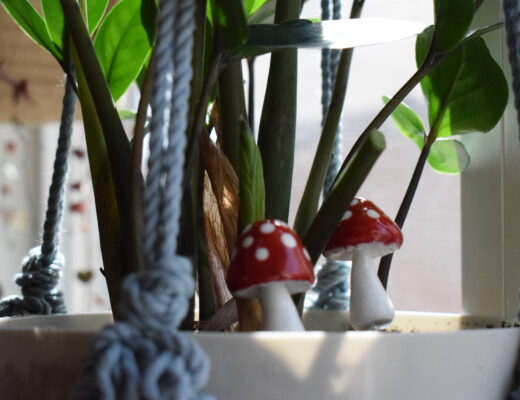
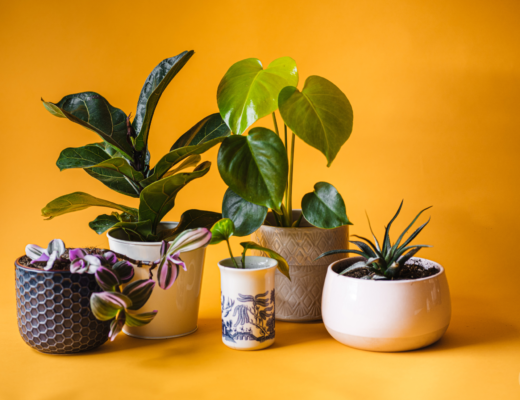
2 Comments
Dorothy
October 15, 2024 at 12:07 pmYour first floor plant and it’s gorgeous!
Brianna Rockett
October 27, 2024 at 6:52 pmI am in love with it!